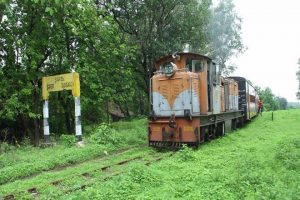Waghai-Bilimora Heritage Line:

The Western Railway has decided to not stop the services of three trains, including the 107-year-old narrow gauge heritage train between Vaghai and Bilimora, in Gujarat permanently.
- The other two narrow gauge trains run between Miyagam, Choranda and Malsar, and Choranda junction and Moti Karal.
- In rail transport, track gauge or track gage is the spacing of the rails on a railway track.
- The Ministry of Railways, previously issued a letter to the Western Railway ordering permanent closure of 11 “uneconomic branch lines” and narrow gauge sections of the Western Railway, including three from Gujarat.
About the Waghai-Billimora Train:
- It started in 1913, was a remnant of the Gaekwad dynasty who ruled the princely state of Baroda. Tribal people from the interior commute by this train regularly.
- The train covers a distance of 63 kilometers.
- At the instance of Gaekwad rulers, the British laid railway tracks and it was operated by Gaekwad Baroda State Railway (GBSR) owned by Sayajirao Gaekwad III.
- The Gaekwad jurisdiction was spread across parts of Saurashtra, Mehsana in north Gujarat, and Bilimora in South Gujarat.
- The founder of the dynasty was Damaji I who had risen to power by 1740. The last Gaekwar, Sayaji Rao III, died in 1939.
- For about 24 years the train was run by a steam engine, which was replaced by a diesel engine in 1937.
- In 1994, the original steam engine was put on display at Churchgate Heritage Gallery in Mumbai.
- This was much before the Western Railway came into existence in 1951 with the merger of the Bombay, Baroda & Central India Railway, the Saurashtra, Rajputana, and Jaipur state Railways.
- The 63-km Billimora-Vaghai and the 19-km Choranda-Moti Karal routes are among those five routes the Indian Railways had proposed to be preserved as “industrial heritage” in 2018.




